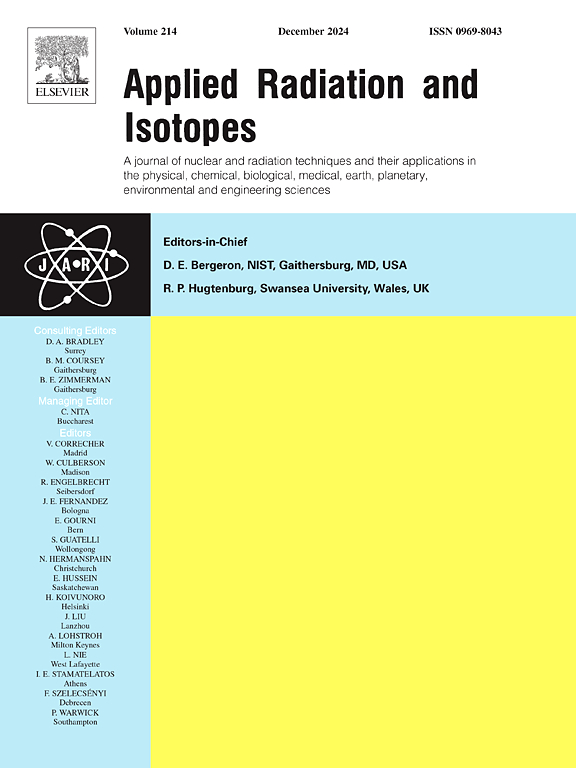Radiation dose and cancer induction risk from diagnostic mammography in Dubai tertiary hospital
IF 1.6
3区 工程技术
Q3 CHEMISTRY, INORGANIC & NUCLEAR
引用次数: 0
Abstract
This study aimed to estimate radiation dose and to assess the probability of cancer induction risk among patients who underwent mammography procedure in tertiary hospital in Dubai. After obtained approval from the research ethic committee,155 female patients with an average age of 55.5 ± 12.7 years-old were selected as subjects. Acquisition parameter, tube potential, tube current, compression force, and entrance dose were recorded and analyzed. The Mean Glandular Dose (MGD) were determined by applying the Dance formula, considering the entrance surface air kerma (ESAK) and other conversion coefficients. Patient age-data was used to assess the cancer induction risk from the acquisition, based on Biological Effects of Ionizing Radiation VII (BEIR VII) report, and standardizing the breast thickness. The MGD ranged between 0.7 and 3.5 mGy for medio-lateral oblique (MLO) and for cranio-caudal (CC) projections, respectively. The median MGD for CC lies between 1.4 mGy and 2.1 mGy, with an average of 1.7 mGy. Additionally, the MGD for the 3rd quartile spans a two-fold range. In a population of 100,000 exposed to MLO projection, the cancer incidence risk for a 37-year-old female was 6 times higher than that of a 60-year-old female, at 3.2 out of 100,000 and 0.5 out of 100,000, respectively. The LAR for the 35–45 years age group is 1.91 ± 0.66, decreasing to 0.27 ± 0.07 for those over 65 years. The CC view also shows a decrease from 1.73 ± 0.57 to 0.23 ± 0.04. The mammographic screening radiation dose and the risks that have been found in Dubai all fall within the recommended range, thereby calling for more works of research to determine the progress made in radiation protection. The study has provided additional evidence that the radiation dose used in current practice can be improved.
求助全文
约1分钟内获得全文
求助全文
来源期刊

Applied Radiation and Isotopes
工程技术-核科学技术
CiteScore
3.00
自引率
12.50%
发文量
406
审稿时长
13.5 months
期刊介绍:
Applied Radiation and Isotopes provides a high quality medium for the publication of substantial, original and scientific and technological papers on the development and peaceful application of nuclear, radiation and radionuclide techniques in chemistry, physics, biochemistry, biology, medicine, security, engineering and in the earth, planetary and environmental sciences, all including dosimetry. Nuclear techniques are defined in the broadest sense and both experimental and theoretical papers are welcome. They include the development and use of α- and β-particles, X-rays and γ-rays, neutrons and other nuclear particles and radiations from all sources, including radionuclides, synchrotron sources, cyclotrons and reactors and from the natural environment.
The journal aims to publish papers with significance to an international audience, containing substantial novelty and scientific impact. The Editors reserve the rights to reject, with or without external review, papers that do not meet these criteria.
Papers dealing with radiation processing, i.e., where radiation is used to bring about a biological, chemical or physical change in a material, should be directed to our sister journal Radiation Physics and Chemistry.
 求助内容:
求助内容: 应助结果提醒方式:
应助结果提醒方式:


